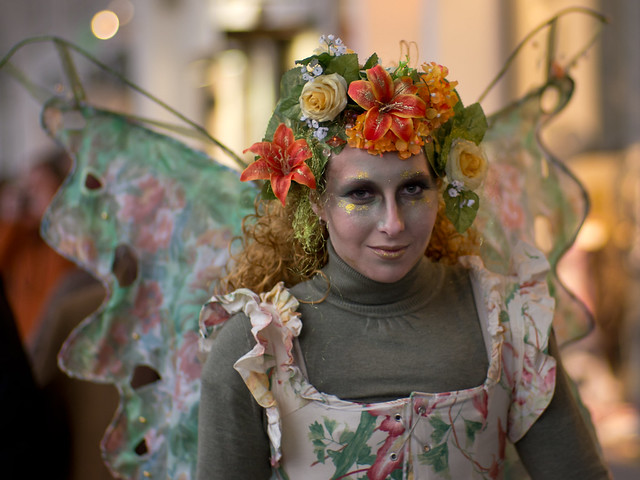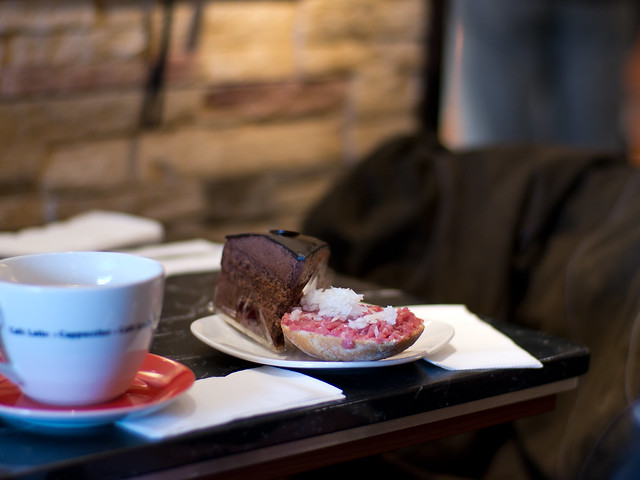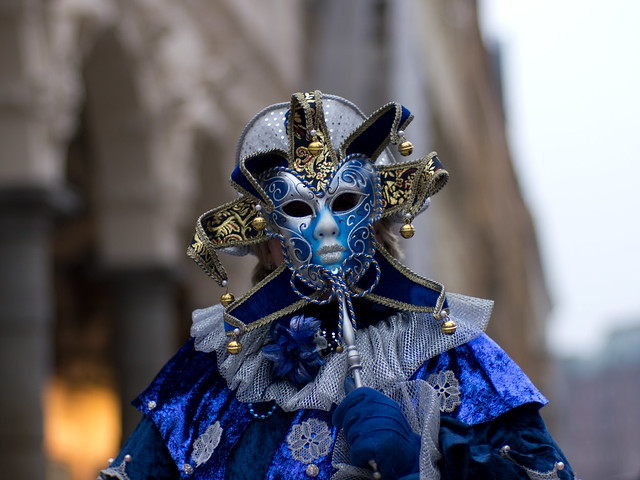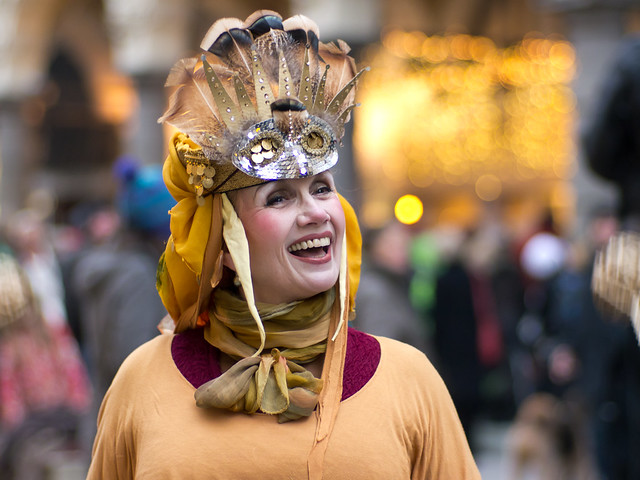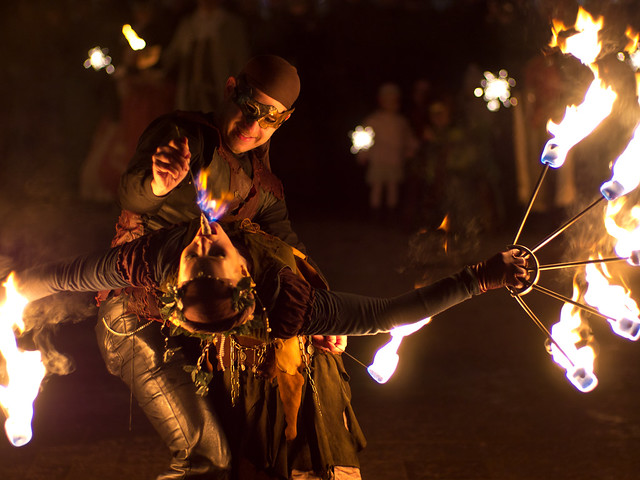The exceptional picture composing options of bright prime lenses make them desireble especially for the MicroFourThirds camera system. 3D-Kraft demonstrates how a bright standard lens transforms into a fantastic portrait focal length and compares the qualities of the Leica Noctilux-M 1:0.95 / 50mm with its predecessor, the Noctilux-M 1:1.0 / 50mm.
The recent success story of the mirror-less, and thus relatively compact Micro Four Thirds (mFT) camera system was pushed forward also by the fact that quite quickly the usual focal lengths from wide angle to telephoto were covered with compact and high quality lenses from Olympus and Panasonic. Even attractive ultra wide-angle and super telephoto zoom lenses are available meanwhile. However bright prime lenses lacked for a long time.
The enormous demand for the - mostly sold - Voigtänder Nokton 25mm/0.95 shows the strong desire for such primes. It's not just the high gain at low light, that many users require, but also the associated shallow depth of field (DOF) available for attractive image compositions. Because of the smaller camera sensor (crop factor 2 compared to a "full frame" sensor) the focal length required for a certain viewing angle halves as well but the ratio of focal length and full aperture diameter doubles for a comparably shallow depth of field. Thus a person to be portrayed in front of a background that should appear with a smooth and creamy bokeh with mFT cameras requires focal lengths of about 35 to 50 mm and an open aperture starting at about f 1.0 to 1.4 which makes these lenses usually much more expensive.

Viewing angle / Crop of a FourThirds sensors compared to a "full frame" 35mm sensor at identical focal length.
(Image courtesy: Peter Lück, Camera-JPEG Leica Noctilux 1.0 with open aperture at Leica M9)
Fortunately, you are not forced to wait for the offering of such a lens segment in the MFT. The possibility to adapt almost any other lens system to Micro Four Thirds System cameras because of the mirror-less design was quickly recognized, so there are lots of appropriate adapters available meanwhile. Because of an only slightly different flange back distance of the Leica M system, lenses for cameras with the M-bayonet can also be used in the MFT system and they are - thanks to their high quality - even after many years coveted hunting objects in the second hand market. In general, they have no auto focus or lose this ability with other systems through the most purely mechanical adaptation. With some practice, manual focusing on such specialized lenses will be appreciated soon, because it allows for the sometimes only inches deep depth of field set more precisely than with any automatic. Very useful here are electronic view finders (EVF) that can be easily activated and that allow 5x or 10x magnification.
When you enter the area of extremely large-aperture lenses, you will sooner or later come accross the Leica Noctilux 50mm/0.95, which is currently the world's brightest aspheric lens. It appeared in 2008 and is the successor to the legendary "King of the Night", the Leica Noctilux 50mm/1.0. It represents like not other Leica's excellence to develop and manufacture such high-quality lenses. While the current 0.95er Noctilux is hard to get and because of its price tag of approximately 8000 EUR it is often beyond the budget. Its predecessor has better availability in the second hand market now and can be won around around 3500 to 4800 EUR - depending on age and condition. Of course there are some much cheaper alternatives, such as the Voigtlander Nokton 50mm/1.1 or the 50mm/1.2 Canon EF. They may be worth its price, but achieve balance with regard to sharpness, contrast and bokeh not on the level of a Leica Noctilux. So who is willing to invest such sums into a manual fixed focal length, will ask as the next question, if the additional expenditure for a new Leica Noctilux 50/0.95 against a 50/1.0 - in good condition - appears justified.


Left hand side: Leica Noctilux-M 1:1.0 / 50mm (E60 version with extensible, slightly square lens hood)
Right hand side: Leica Noctilux-M 1:0.95 / 50mm (with extensible lens hood))
A few facts first about the older Noctilux: It was manufactured in Canada since 1975, initially in a version with 58mm filter thread, and later as "E 60" with a 60mm filter thread. The hood changed its shape over the years as well. Was it at first round and screw-on, it was later fixed but extensible. The latest E60 version is already 6-bit coded, has a rather square, sliding hood with rounded corners that produces less shade to the viewfinder of a Leica M camera. The optics was based on the same calulation throughout the entire period but the antireflective coating is rumored to have changed over the years. The actual focal length of each item is measured in the final production step. The result is engraved in the housing using the following codes: 00 for 50mm, 01 for 51mm and 02 for 52mm.
The successor is a completely new development and is made since 2008 in the German Leica headquarters in Solms. It uses aspherical elements, as well as "floating elements", is a bit bigger and heavier and has a shorter focus thread. Its vignetting on full frame sensors is less than its predecessor and it has a better sharpness in the edges.
...and which differences appear when attached to a mFT system camera?
The illustration of the crop factor relationship shown above also indicates the vignetting and slightly recognizable loss of edge sharpness of the Noctilux 1.0 at open aperture when attached to a full frame Leica M9. The red marked rectangle shows the crop that mFT a sensor actually use from the full frame image. It is well recognizable that the stronger vignettiing and the edge blur of a Noctilux 1.0 opposite a Noctilux 0.95 affect the image only within areas that are not covered by the mFT the sensor. With other words: MFT cuts only the “piece of filet” from the lense's picture circle.
The Noctilux mounted to a micro Four Thirds camera results in an unusually balanced combination, but still appears "visually" balanced. If your camera is equipped with an electronic viewfinder providing magnification it is very helpful for precise focusing. The Noctilux 1.0 is said to have a certain focus shift on rangefinder cameras like the Leica M9, which was opimized ith the new 0.95er version. However - on cameras with electronic viewfinders this plays no role.
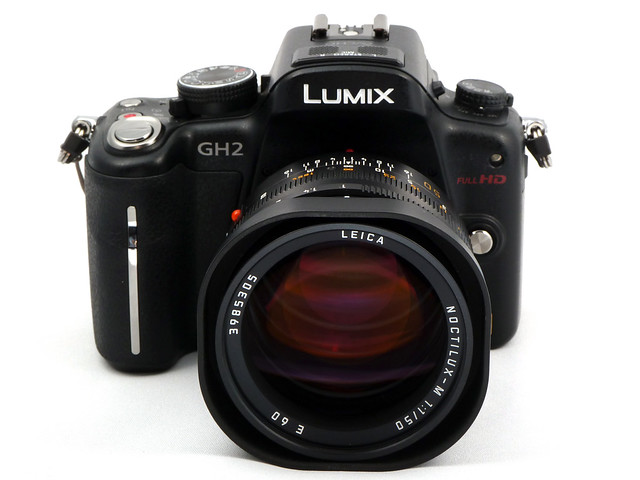
Leica Noctilux 50/1.0 adapted to a Panasonic Lumix GH2
Let us consider some comparative examples, all of which are viewable by clicking on it in full size
- First with open aperture:

(Noctilux 1.0 at f1.0; click for full resolution)

(Noctilux 0.95 at f0.95; click for full resolution)
Both images are comparable in terms of sharpness in the focal region. For portraits of this kind a certain softness and "glow" is OK and may be desired. Both lenses show at open aperture a tendency to color frings which ar not atypical for this light intensity. A typical difference between the old and the new Noctilux is already clearly visible: while the circles of confusion have the "bubble" shape that is characteristic for the Noctilux 1.0, the new aspherical corrected Noctilux draws the them clearly neutral.

(Noctilux 1.0 at f1.0; click for full resolution)

(Noctilux 0.95 at f0.95; click for full resolution)
In these examples you can see the smoother out-of-focus rendering in the background of the aspherical Noctilux below whereas above you see the typical circles of the older Noctilux.
The following two pictures show the image composition options in daylight and aperture f1.4. Due to the tremendous intensity here you usually will have to provide a gray filter (in the examples, an ND filter from B & W) for a darkening of three stops otherwise even at a shutter speed of 1/4000s you willl get over-exposed results.

(Noctilux 1.0 at f1.4; click for full resolution)
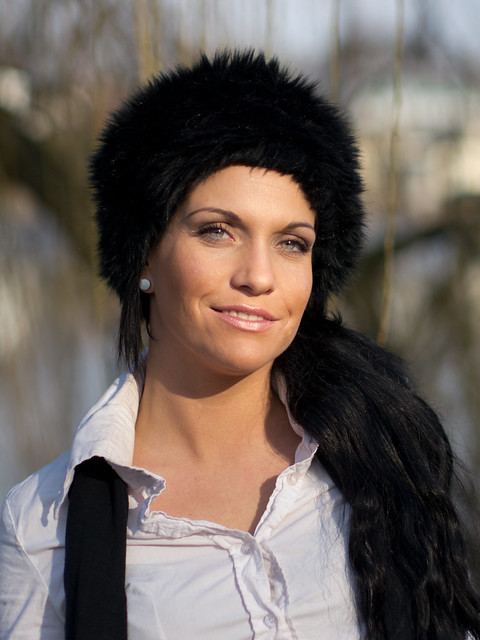
(Noctilux 0.95 at f1.4; click for full resolution)
Both lenses provide excellent sharpness at f1.4 already, but are also struggling with minor color frginging even at this dimming. At f1.4 the bokeh has hardly noticeable differences.
Conclusion:
- With regard to sharpness and contrast both Noctilux generations are head to head in the crop area of a Four Thirds sensor.
- Both offer exceptional brightness and provide a unique visualization in the area of avialable light photography
- The aspherically corrected Noctilux has a slightly more neutral creamy bokeh at open aperture whereas the predecessor at f1.0 has its own "bubble" character. Who likes this more or less is substantially influenced by personal preferences. It is the balance between perfection and character.
- At open aperture center-weighted auto exposure tends for both lenses in a slight under-exposure, since the brightness decreases towards the edges. With the old Noctilux this effect is even more distinctive and should be taken into account in setting the camera by a slight increase in exposure.
- In the operation of the old Noctilux focussing is slower but may be easier to adjust accurately. In my tests, the rate of correctly focused images with the old Noctilux was slightly higher. For video applications the shorter focus translation might be helpful.
The following series illustrates the development of the circles of confusion across different aperture settings at the older Noctilux 1.0.





At f1.4 you see already nearly circular lights, at f1.0 the rings turn into bubbles.
Concluding several other examples that show the character and composing options of such an extraordinary lens. Please click for full resulition:

(f1.4, ISO 800 - here some candles were the dominating light sources)

Leica on Lumix (shot with the Noctilux 1.0 attached to a Leica M9 by Dierk)
For further examples please follow this this link. The author will be happy if you leave some feedback here.




